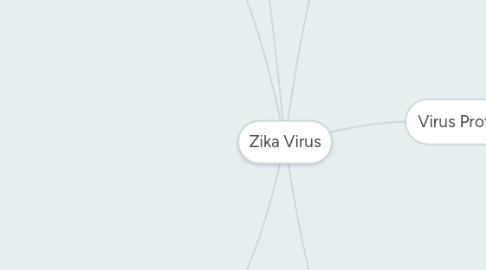
1. Antivirals
1.1. No vaccine
1.2. No prophylaxis
1.3. Treatment
1.3.1. Symptom relief
1.4. Potential
1.4.1. IAA
1.4.1.1. Attachment inhibitor
1.4.1.1.1. Heparan sulfate-mimetic compound
1.4.1.2. Entry inhibitor
1.4.1.2.1. AXL antagonist
1.4.1.2.2. TIM antagonist
1.4.1.3. Internalization inhibitor
1.4.1.4. Lipid modulators
1.4.1.4.1. Fatty acid synthesis inhibitor
1.4.1.4.2. Cholesterol synthesis inhibitor
1.4.1.4.3. S1P inhibitor
1.4.1.5. Autophagy inhibitor
1.4.1.5.1. Lipophagy inhibitor
1.4.1.5.2. Proteosome inhibitor
1.4.1.6. Maturation inhibitor
1.4.1.6.1. Furin inhibitor
1.4.2. DAA
1.4.2.1. Fusion inhibitor
1.4.2.1.1. E protein
1.4.2.2. NS5 inhibitor
1.4.2.2.1. RNA polymerase
1.4.2.3. Multifunctional targets
1.4.2.3.1. NS3 inhibitor
1.4.2.3.2. NS1
1.4.2.4. NS4B inhibitor
1.4.2.4.1. Prevent Mitochondria elongation
1.4.2.4.2. Prevent interruption of innate immunity
2. Host-virus interactions
2.1. ER rearrangement
2.1.1. Vesicle Packets (VP)
2.1.1.1. ER invaginations
2.1.1.2. Site of RNA replication
2.1.2. Virus Bags (VB)
2.1.2.1. Virions accumulate in regular arrays
2.1.3. Convoluted membranes (CMs)
2.1.3.1. Unknown process
2.1.3.2. NS3 enriched
2.1.3.3. Polyprotein maturation
2.2. Lipophagy
2.2.1. Energy source of ER rearrangement
2.3. Mitochondria elongation
2.3.1. RIG-I-dependent interferon response
2.3.2. MAM disruption
2.3.2.1. Mitochondria-associated membrane
2.3.2.2. Contact site between ER & mitochondria
2.3.2.3. Cellular homeostasis
2.3.2.4. Lipid synthesis
2.3.2.5. Protein degradation
2.3.2.6. Energy Metabolism
2.3.2.7. Innate immune signaling
2.3.2.7.1. MAVS
2.3.2.7.2. RLR
3. Questions
3.1. ZIKV in Canada?
3.2. How do you monitor ZIKV?
3.3. Treatment for ZIKV?
3.4. Translatable techniques from WNV to ZIKV
3.5. What is the role of bats in ZIKV ecology?
3.6. Why are there no cases of ZIKV in India?
3.6.1. How wide spread was the earlier outbreak in 1950?
3.6.2. How exposed was the Indian population in the first wave?
3.6.3. Life-long immunity against pandemic ZIKV?
3.7. Can asymptomatic individuals transmit ZIKV?
3.8. Why are some disease only reported in certain countries?
3.9. Impact of co-circulation of ZIKV and DENV?
3.9.1. How does a previous infection with DENV affect an individual with ZIKV?
3.10. Male infertility?
3.11. Economic burden of ZIKV syndrome
3.12. Is ZIKV a mosaic virus?
3.13. Co-localization of NS1 with NS4B? (+NS4A?)
3.14. Exosome-mediated transmission of infectious vRNA?
3.14.1. Method of entry to CNS & PNS?
3.15. How long does ZIKV immunity last?
4. Virus disease
4.1. Disease depends on portal of entry
4.2. Asymptomatic (~80%)
4.3. Symptomatic (~20%)
4.3.1. Misdiagnosed as DENV
4.3.2. Hemorrhagic
4.3.3. Autoimmune disease
4.3.4. Neurological disorders
4.3.5. Main
4.3.5.1. Maculopapular rash
4.3.5.2. Retro-orbital pain
4.3.5.3. Low-grade fever
4.3.5.4. Non-specific symptoms (ex. headache)
4.3.5.5. Transient arthritis or arthralgia
4.4. Microcephaly
4.5. Transmission
4.5.1. Vector
4.5.1.1. Same as blood transfusion
4.5.1.2. Damage nervous system
4.5.1.3. Brain inflammation
4.5.1.4. Guillain-Barre syndrome
4.5.1.5. Destruction of testes
4.5.1.5.1. Reduce sperm count
4.5.1.5.2. Reduce testosterone
4.5.2. Fluids
4.5.2.1. Blood transfusion
4.5.2.2. Saliva
4.5.2.3. Urine
4.5.3. Sexual
4.5.3.1. Semen (~6 months)
4.5.4. Vertical
4.5.4.1. Placental macrophages
4.5.4.2. Placental cells
4.5.4.3. Impair placental function
4.5.4.4. Apoptosis of neuroprogenitor cells
4.6. Cycles
4.6.1. Sylvatic (~0 incidence)
4.6.2. Endemic (moderate/low incidence)
4.6.3. Epidemic (high incidence)
4.6.4. Not at risk (importation)
4.7. Diagnostics
4.7.1. MS-base
4.7.1.1. Detecting
4.7.1.2. Quantitating
4.7.1.3. NS1
4.7.1.4. Virions (M/E)
5. Virus Protein/Genome
5.1. Structural
5.1.1. Core
5.1.2. pr-M
5.1.2.1. Serine residue
5.1.2.2. Optimal cleavage site
5.1.2.3. Fully cleaved
5.1.3. E
5.1.3.1. AXL receptor
5.2. Non-structural
5.2.1. NS1
5.2.1.1. Multifunctional
5.2.1.2. Dimer
5.2.1.2.1. Modulate vRNA replication
5.2.1.2.2. Organizational role
5.2.1.2.3. Interact with pr-M & E
5.2.1.2.4. Link VP with virion formation
5.2.1.3. Hexamer
5.2.1.3.1. Immune evasion
5.2.1.3.2. Endothelial permeability
5.2.2. NS2B
5.2.2.1. Co-factor
5.2.3. NS3
5.2.3.1. Protease
5.2.3.2. Helicase
5.2.4. NS4A
5.2.4.1. Organizational role
5.2.5. NS4B
5.2.5.1. Inhibits activation of mitochondrial fission factor
5.2.5.2. Disrupt fusion/fission equilibrium
5.2.5.3. Dampens interferon response
5.2.6. NS5
5.2.6.1. RNA polymerase
6. Virus Lifecycle
6.1. Co-circulation
6.1.1. Similar symptoms
6.1.2. Misdiagnosis
6.1.3. DENV
6.1.4. CHIKV
6.1.5. YFV
6.2. Not in India
6.3. Attachment
6.3.1. GAG
6.3.2. DC-SIGN
6.4. Entry
6.4.1. PS receptor
6.4.2. TAM
6.4.2.1. TYRO3
6.4.2.2. AXL
6.4.2.3. MER
6.4.3. TIM
6.5. Internalization
6.5.1. Clathrin-mediated endocytosis
6.6. Fusion
6.6.1. pH-dependent conformational change
6.6.2. E protein
6.7. Translation & replication
6.7.1. ER rearrangement
6.7.2. Fatty acids & cholesterol
6.7.3. Nucleotide biosynthesis
6.8. Trafficking & release
6.8.1. Maturation in TGN
6.8.2. Furin
6.8.2.1. pr-M cleavage
6.8.2.2. low pH
6.8.3. Secretory pathway
